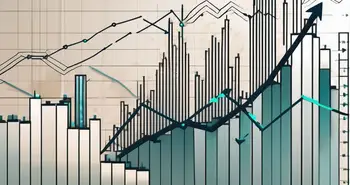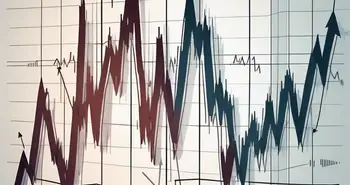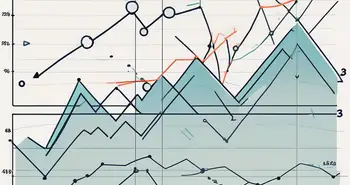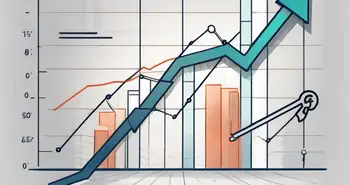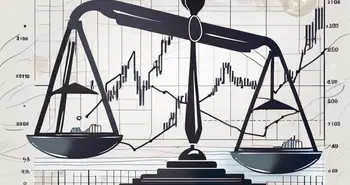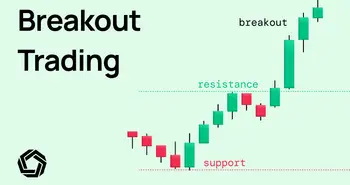Mastering Trendline Trading: Proven Techniques for Financial Market Success
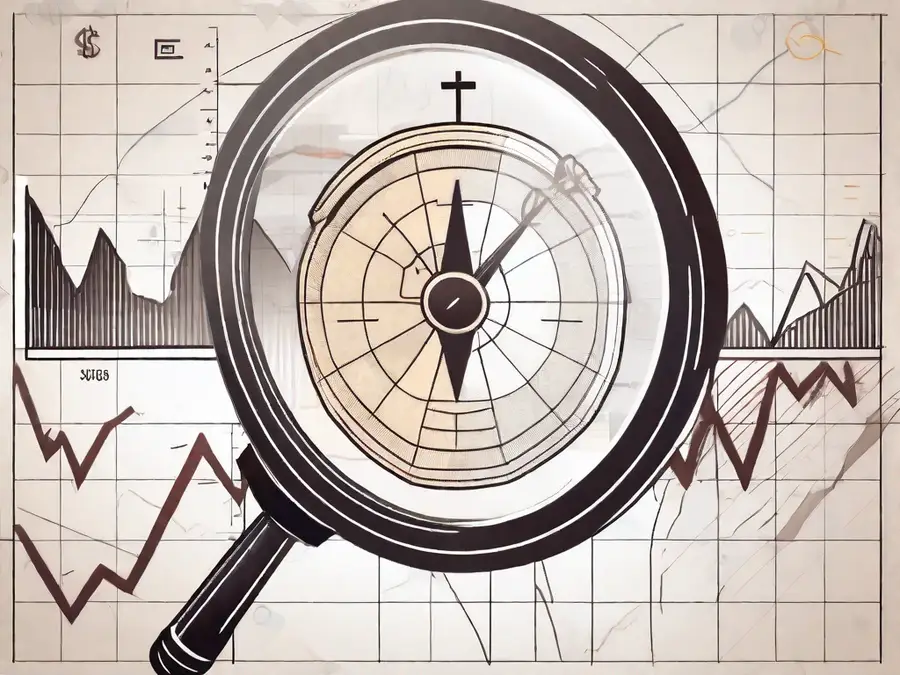
Trendline trading is a powerful tool that can help traders predict market trends and make informed decisions. By understanding how to draw and interpret trendlines, you can significantly increase your chances of success in the financial market. As an experienced trader and financial analyst, I've used trendline trading to my advantage countless times, and I'm excited to share my knowledge with you.
Understanding Trendline Trading
Trendline trading is a technical analysis tool used by traders to identify and react to market trends. It involves drawing a line on a price chart to connect a series of higher lows in an uptrend or lower highs in a downtrend. This line, known as the trendline, can help traders identify potential buying or selling opportunities.
Over the years, I've found that trendline trading is not just about drawing lines on a chart. It's about understanding the market psychology behind those lines. When a trendline is respected, it shows that the prevailing market sentiment is strong. But when a trendline is broken, it can signal a potential reversal, providing a valuable opportunity for traders.
Uptrends and Downtrends
In an uptrend, the price makes higher highs and higher lows. This indicates that buyers are in control and the price is likely to continue rising. In this situation, traders can look for buying opportunities whenever the price touches the trendline.
In a downtrend, on the other hand, the price makes lower highs and lower lows. This suggests that sellers are dominating and the price is likely to continue falling. Here, traders can seek selling opportunities whenever the price touches the trendline.
How to Draw Trendlines
Drawing trendlines may seem simple, but it requires practice and precision. The key is to connect as many price points as possible without cutting through the price action. Remember, the more times a trendline is touched, the more significant it becomes.
When drawing an uptrend line, connect the higher lows. For a downtrend line, connect the lower highs. It's important to note that a valid trendline should be touched by the price at least three times. This ensures that the trendline is not based on random price movements but reflects a genuine market trend.
Using Trendlines in Trading
Once you've drawn your trendline, you can use it to guide your trading decisions. If the price is approaching the trendline in an uptrend, consider buying. If the price is approaching the trendline in a downtrend, consider selling.
However, be cautious about false breakouts, where the price briefly crosses the trendline but quickly reverses. To avoid falling for these traps, wait for a confirmation, such as a candlestick closing above or below the trendline, before entering a trade.
Advanced Trendline Trading Techniques
While basic trendline trading can be profitable, there are advanced techniques that can further enhance your trading performance. These techniques involve using trendlines in conjunction with other technical analysis tools, such as support and resistance levels, Fibonacci retracements, and moving averages.
For instance, if a trendline coincides with a key support or resistance level, it can create a powerful trading signal. Similarly, if a trendline aligns with a Fibonacci retracement level or a moving average, it can strengthen the validity of the trendline.
My Personal Trendline Trading Story
I remember a time when I was trading the EUR/USD pair. The price was in a clear uptrend, with a well-established trendline. However, I noticed that the price was approaching a key resistance level, which also coincided with the 61.8% Fibonacci retracement level.
Seeing this confluence of technical factors, I decided to go long on the pair. Sure enough, the price bounced off the trendline and surged higher, resulting in a profitable trade. This experience reinforced my belief in the power of trendline trading and the importance of combining it with other technical analysis tools.
FAQs on Trendline Trading
What is trendline trading?
Trendline trading is a technical analysis tool used by traders to identify and react to market trends. It involves drawing a line on a price chart to connect a series of higher lows in an uptrend or lower highs in a downtrend.
How do you draw a trendline?
When drawing an uptrend line, connect the higher lows. For a downtrend line, connect the lower highs. A valid trendline should be touched by the price at least three times.
How can you use trendlines in trading?
If the price is approaching the trendline in an uptrend, consider buying. If the price is approaching the trendline in a downtrend, consider selling. Always wait for a confirmation before entering a trade to avoid false breakouts.
Mastering trendline trading is not an overnight process. It requires practice, patience, and a deep understanding of market psychology. But once you've mastered it, you'll have a powerful tool at your disposal that can significantly increase your chances of success in the financial market.
Ready to put your trendline trading mastery into action? Join Morpher, the revolutionary trading platform that's redefining the investment landscape. With Morpher, you can apply your strategies across a multitude of markets, including stocks, crypto, and more—all with zero fees, infinite liquidity, and the convenience of 24/7 trading. Whether you're looking to invest fractionally, short sell without interest fees, or leverage your trades up to 10x, Morpher provides the tools for success. Plus, with the Morpher Wallet, you'll enjoy unparalleled safety and control over your investments. Don't miss out on a unique trading experience built on the Ethereum Blockchain. Sign Up and Get Your Free Sign Up Bonus today and elevate your trading game with Morpher.

Disclaimer: All investments involve risk, and the past performance of a security, industry, sector, market, financial product, trading strategy, or individual’s trading does not guarantee future results or returns. Investors are fully responsible for any investment decisions they make. Such decisions should be based solely on an evaluation of their financial circumstances, investment objectives, risk tolerance, and liquidity needs. This post does not constitute investment advice.

Painless trading for everyone
Hundreds of markets all in one place - Apple, Bitcoin, Gold, Watches, NFTs, Sneakers and so much more.

Painless trading for everyone
Hundreds of markets all in one place - Apple, Bitcoin, Gold, Watches, NFTs, Sneakers and so much more.


